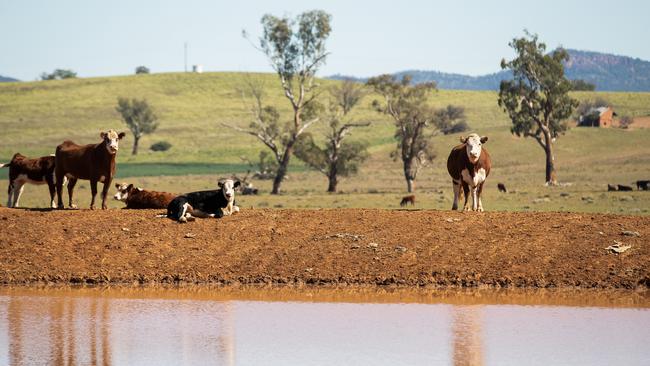Wetter-than-average start for Queensland, NSW while Victoria and South Australia remain dry
Parts of the country received a quarter of their annual rainfall in the first two weeks of the year, while 2020 has been declared Australia’s fourth-hottest year on record.

PARTS of southeast Australia have received a quarter of their annual rainfall in the first two weeks of the year.
Figures from the Bureau of Meteorology show parts of NSW and southern Queensland have recorded a wetter-than-average start to the year while conditions in most of South Australia’s South East and western Victorian cropping regions remain relatively dry.
According to the BOM’s eight-day rainfall outlook, dry conditions are expected to persist for at least the next week with the best chance of rain 1-5mm forecast for parts of southwest Victoria and Gippsland.
Rainfall figures for the first two weeks of the year show the NSW Western Division and centralwest as recording the best rain compared to its long-term average, in addition to southern Queensland which traditionally relies on summer rain.
Ivanhoe, in western NSW, has recorded 57mm of rain in the past fortnight, equalling 24 per cent of its normal 12-month average. Forbes in NSW has recorded 89mm or 19 per cent of its normal annual total followed by Cobar (60mm or 18 per cent), Pilliga (98mm or 18 per cent), Coonabarabran (91mm or 14 per cent), Mungindi (68mm or 13 per cent) and Parkes (83mm or 13 per cent).
In Queensland, the best falls relative to average have been at Rolleston (136mm representing 21 per cent of its long-term annual average), Miles (108mm or 21 per cent), Biloela (101mm or 17 per cent), Texas (103mm or 16 per cent) and Springsure (42mm or 14 per cent).
Yarram, in South Gippsland, leads the early charge in Victoria with 107mm in the past fortnight equalling 15 per cent of its 12-month average. Westmere and Avalon in western Victoria have each recorded about 10 per cent of their totals with 55mm and 42mm respectively.
South Australia is yet to get many runs on the board with Lameroo’s 11mm so far topping the state, accounting for 4 per cent of its yearly average, followed by Renmark’s 6.2mm.
Meanwhile, 2020 was last week declared Australia’s fourth-hottest year on record. In its 2020 climate statement, the BOM said six of the 12 months were among the 10 warmest on record. The hottest temperature for the year nationally was 48.9C at Penrith, in western Sydney, in early January last year. The coldest, -14.2C, was recorded at Liawanee in Tasmania’s Central Highlands during August.
MORE



